The Hanson Ranch Bonebed is part of east Wyoming’s Lance Formation. Over the past 20 years, excavations there have yielded some 8,400 identifiable fossilized bones. These come from an area of 506 square meters.1 But the fossil hunters working at this site believe they have only scratched the surface; estimates suggest that a total of somewhere between 10,000 and 25,000 dinosaurs are buried over an area of about one kilometer.2 The vast majority of dinosaur bones are of a single species: Edmontosaurus annectens.
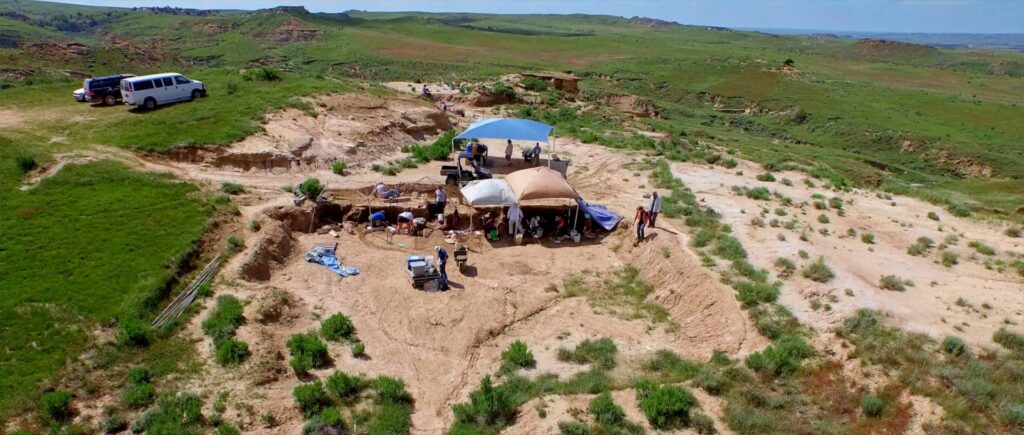
The views expressed in this article reflect those of the authors mentioned, and not necessarily those of New Creation.
But researchers have made peculiar observations about the Hanson Ranch Bonebed. One is that there are no complete skeletons. They are all fragments, with all but 0.1% of findings so far representing isolated bones buried in one place. Moreso, all of the fossils lie within a single layer of mudstone no more than three to six feet in thickness. How were so many dinosaurs buried in one place?
What is Edmontosaurus?

Edmontosaurus belongs to the hadrosaur (“duck-billed”) family of dinosaurs. At four tons and almost 40 feet long, a full-grown adult had the bulk of an elephant and the length of a school bus. Herbivorous by nature, they are one of the most common dinosaurs found throughout the upper Cretaceous rock layers of western North America, often found alongside Triceratops and Tyrannosaurus.
Massive Bonebeds of Massive Dinosaurs
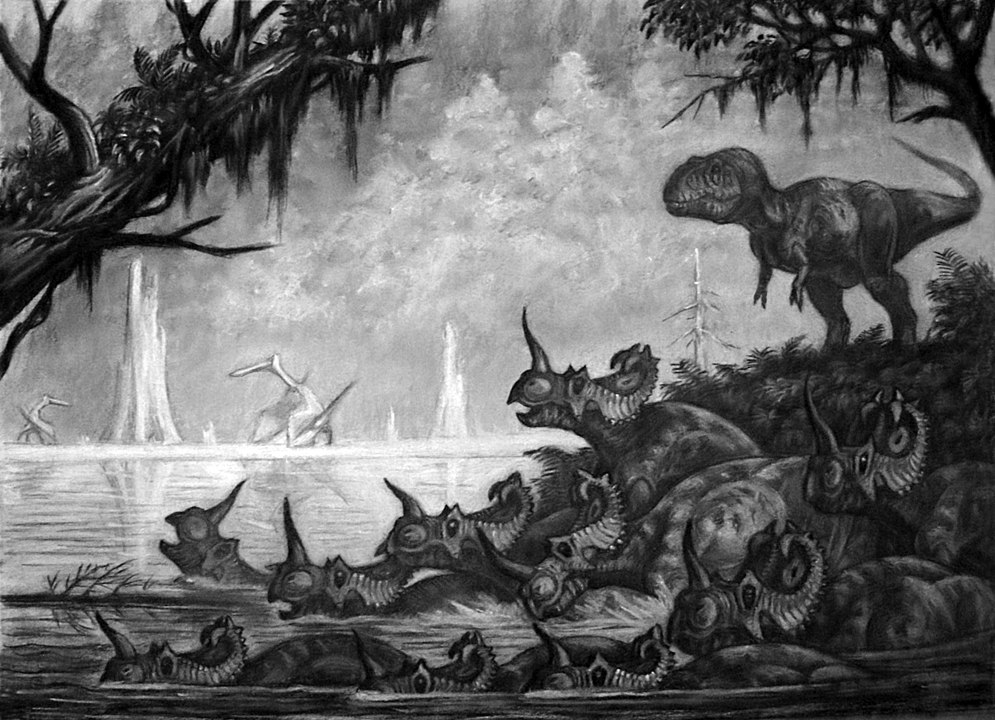
Mega-sized bonebeds mostly belonging to a single species of dinosaur are not uncommon, even ones dominated by Edmontosaurus.3 The Hilda mega-Bonebed in Alberta, Canada is another, containing thousands of horned dinosaurs called Centrosaurus. Scholars have traditionally compared these bonebeds to the mass death that occurs today when herds of migrating animals, like wildebeest or reindeer, drown when trying to cross rivers.4 The moving water transports those that drown, washing them along the shore somewhere downriver. There, they decay and accumulate over long periods of time. Researchers thought that single-species dinosaur bonebeds formed in much the same way.
Problems with the Conventional Model
The model described above now seems to be inadequate for many of the dinosaur bonebeds. The Hanson Ranch Bonebed is especially such a case. As noted above, all of the bones in this deposit appear in one mudstone layer, but they are also sorted by size. Larger bones, such as leg bones, lie clustered toward the bottom of the layer, while successively smaller bones like vertebrae and toe bones appear toward the top. We call these types of deposits graded beds, and they do not fit the gradual accumulation model.
Another problem with the conventional model is that the bones possess very little evidence of exposure to the elements for long periods of time. The animals at this site were buried within weeks to months of their death. Their burial did not occur instantly upon death, however. Instead, they laid around rotting long enough for their tendons, ligaments, and muscles to decay. Evidence that supports this are the fossilized teeth of theropod (meat-eating) dinosaurs, such as Tyrannosaurus, dromaeosaurs, and troodontids scattered around the bonebed. Carnivores like these regularly shed their teeth while feeding, only to grow them back later, much like crocodiles and sharks today.
Neither of these findings supports the gradual accumulation of drowned animals on migratory river crossings. They suggest that these animals were the end-product of a mass-death event. Their burial occurred within weeks to months afterward.
A Catastrophic Burial
Scientists working on the Hanson Ranch Bonebed have proposed a new model to explain the unique fossils preserved here. They suggest that after a large Edmontosaurus herd perished during a single event (perhaps drowning?), their carcasses decayed and floated for a while before washing up on a nearshore environment. During this time, theropods scavenged the carcasses. But within weeks to months of the animals’ deaths, an earthquake occurred that triggered an underwater debris flow. The flow rapidly transported the dead dinosaurs into deep water. They came to rest in a three to six-foot thick layer of mudstone, with bigger bones settling on the bottom and smaller bones settling toward the top.
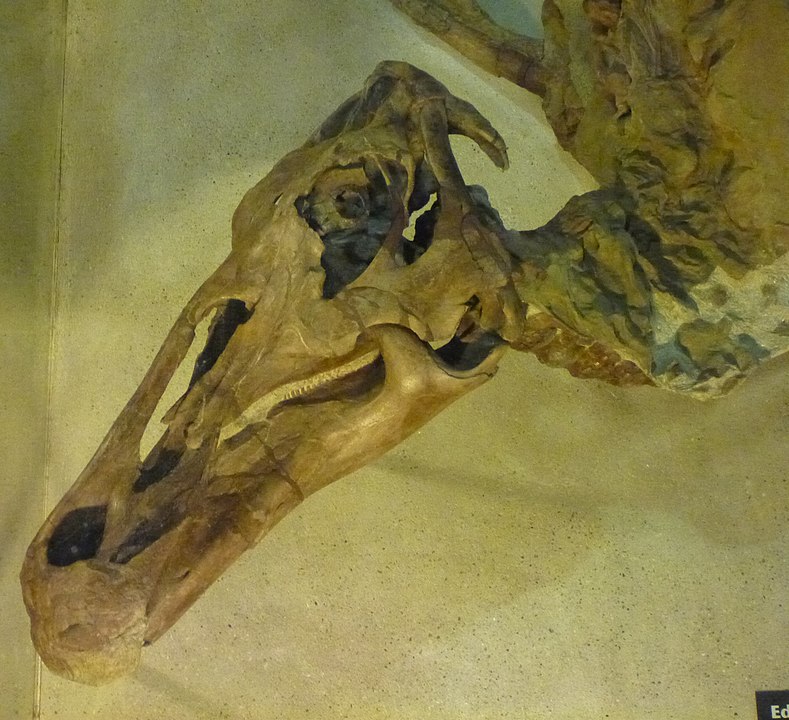
Conclusion
The discovery that large-scale catastrophes can explain single-species dinosaur bonebeds was a revelation for paleontology. Fossil sites like the Hanson Ranch Bonebed remind us vividly that evidence for catastrophism exists all throughout the fossil record. The researchers at this site hope that what they learned here will be applicable to other dinosaur bonebeds found around the world.
Footnotes
- Snyder, K., Mclain, M., Wood, J., Chadwick, A. 2020. “Over 13,000 elements from a single bonebed help elucidate disarticulation and transport of an Edmontosaurus thanatocoenosis.” PLOS ONE. 15. e0233182. ↩︎
- Chadwick A, Spencer L, Turner L. 2006. “Preliminary depositional model for an Upper Cretaceous Edmontosaurus bonebed.” J Vert Paleontol. Supplement 26:49A. ↩︎
- Evans, D. C., Eberth, D. A., & Ryan, M. J. (2015). “Hadrosaurid (Edmontosaurus) bonebeds from the Horseshoe Canyon Formation (Horsethief member) at Drumheller, Alberta, Canada: geology, preliminary taphonomy, and significance.” Canadian Journal of Earth Sciences, 52(8), 642-654. ↩︎
- Eberth, D. A. 2015. “Origins of dinosaur bonebeds in the Cretaceous of Alberta, Canada.” Canadian Journal of Earth Sciences, 52(8), 655-681. ↩︎

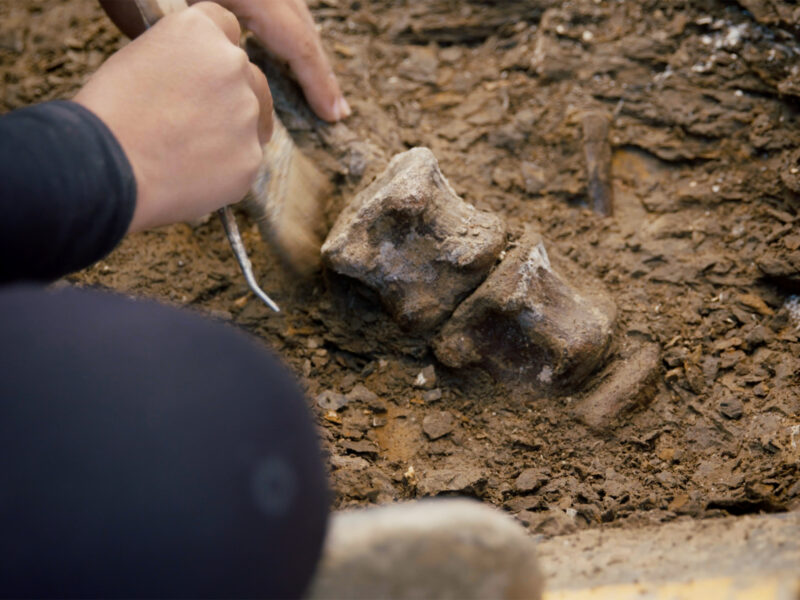
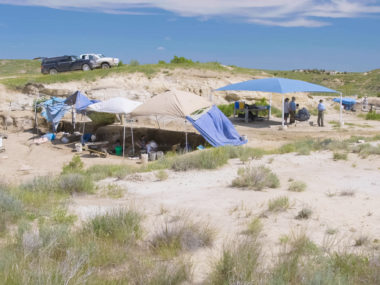

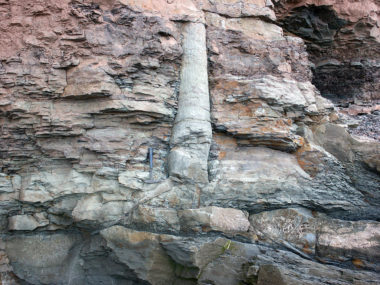


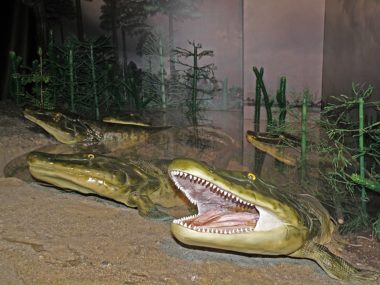




Amen. they indeed were clearly killed at once, and entombed by what killed them. i’m sure its a cross section of ages. i don’t agree there were dinosaurs but whatever these creatures were they moved in herds and preyed upon. i suspect the tail was important and oissibly not dragged along. They were not reptiles. anyways another great article.